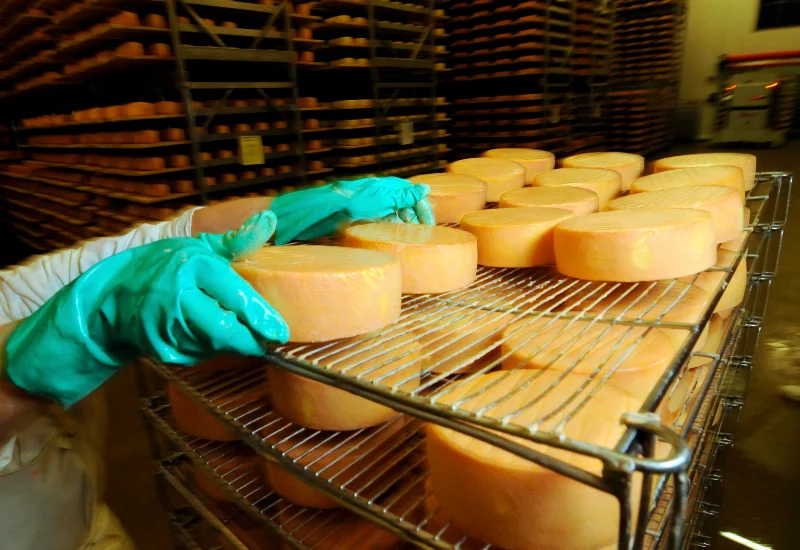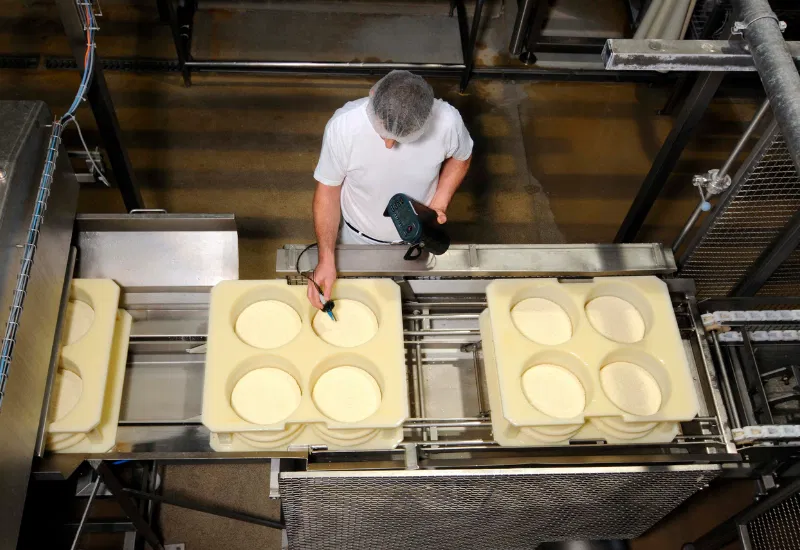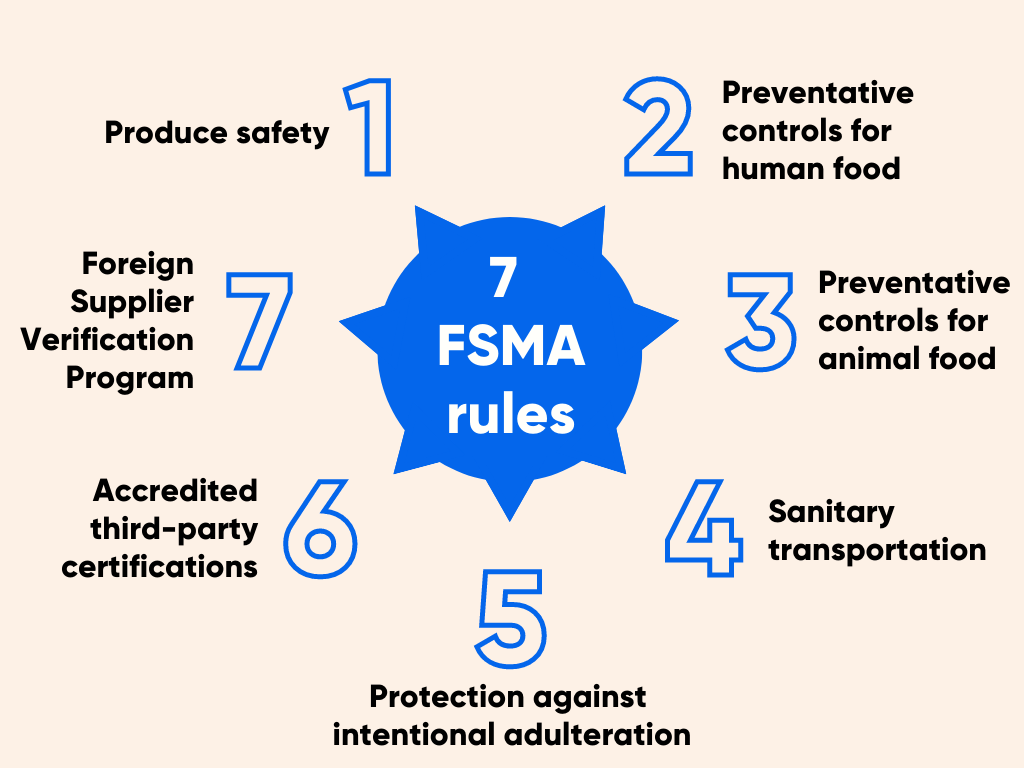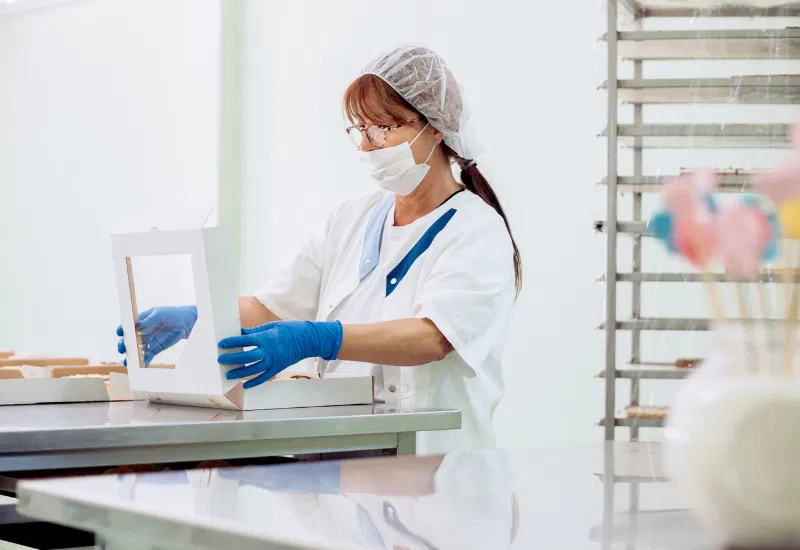
Jun 03, 2025
Written by Jill - Written: August 5, 2022

Foods in supermarkets are more abundant than ever. Shelves are jam-packed with products from around the world, of many brands and prices. There is choice between vegan, gluten-free, light and halal. Specialty stores and online shops each have their specific offerings. Choices are endless, and yet we expect all of these products to be safe for our health.
Every consumer, you and me included, expect all parties involved in the food industry - farmer to seller - to do everything that lies in their power to bring safe, quality products to market. And rightly so. However, recent outbreaks of foodborne disease prove that this remains a challenge.
According to World Health Organization (WHO) figures, 600 million people worldwide get sick each year by unsafe food. 420,000 people a year die of foodborne disease. 30 percent of those deaths occur in children under the age of 5.
In the United States alone, 48 million people - nearly 1 in 6 - get sick from food each year, according to the most recent data from the Centers for Disease Control and Prevention (CDC). Each year, 128,000 Americans are hospitalized and 3,000 die after eating contaminated food.
In the U.S. alone, 15 outbreaks of foodborne disease have been registered so far this year. Some of the most notable cases were these:

Meanwhile, other countries had their own outbreaks to deal with, some with major implications:
At Vizito, we take safety seriously. Here you can read how digital visitor management can improve safety in your company.
To prevent such contaminations, governments impose strict regulations on the production and processing of food. To this effect, the FDA’s Food Safety Modernization Act (FSMA) was put in place. In 2015 7 major rules were finalized for all companies who grow, process, transport or store food.
The produce safety rule establishes science-based minimum standards for the growing, harvesting, packing and storing of produce for human consumption. It covers fruits, vegetables and tree nuts that are likely to be consumed raw.
This rule states that food facilities registered with the FDA must have a food safety plan implemented that identifies hazards and outlines appropriate preventative controls.
The requirements of the previous rule also apply to animal food facilities.
This rule lists the requirements for companies that transport food, including shippers, receivers, loaders and carriers by motor or rail vehicle. Its goal is to keep food safe from contamination during transportation.
This rule is concerned with preventing intentional adulteration “from acts intended to cause wide-scale harm to public health, including acts of terrorism targeting the food supply”.
All food facilities registered with the FDA must develop a plan that assesses contamination vulnerabilities and document a mitigation strategy for each vulnerability.
This rule establishes procedures and requirements for accreditation bodies seeking recognition by the FDA, as well as third party certification bodies seeking accreditation. These bodies will be able to conduct food safety audits and certify that foreign food facilities follow FDA food safety guidelines.
The Foreign Supplier Verification Program applies to all importers of human and animal food into the United States. It requires importers to verify that their global suppliers comply with FDA regulations.

Other countries have adapted similar rules, like the General Food Law Regulation in Europe.
The many outbreaks show that despite these rules, contamination can still occur. We give you 7 tips to observe food safety in your food company, and thus reduce the risks to a minimum.

In most offices, digital visitor registration is already fully integrated. But the benefits of a modern visitor management solution on food safety are rarely mentioned. Here are 5 ways a visitor management system can improve food safety in your business:
Dozens, if not hundreds of people enter your food company every day. Every person who has access to your buildings is a potential source of contamination. Access control is an important pillar to reduce the risks.
A digital visitor management system helps you prevent unauthorized people from entering your food facility. It also ensures that visitors are only granted access to certain areas of your building. And with the help of easy-to-print badges, visitors can be identified in an instant.
Access control doesn’t just apply to visitors. Not all employees should be given access to all departments within your company. The fewer people who have access to the production lines, the lower the risk of contamination. When managing your warehouse, you should always see safety as the top priority and have a secure system to ensure proper food storage.
You can also screen visitors to determine whether they pose a risk to your business. In a short survey, for example, you can gauge the current health status of your visitor. A person that indicates they feel ill or have allergies can then be checked further by an on-site prevention or safety officer.
Read more on how to get started with digital visitor management in less than 30 minutes.
A digital visitor management system enables you to inform your visitors in an easy way and in their own language about the safety and hygiene guidelines that are in place in your company - such as wearing hairnets, masks or protective clothing.
You can load the necessary information into the system and integrate it as a mandatory element in the check-in process. It is also possible to show certain visitors an information or instructional video explaining the guidelines. Finally, you can ask your visitor to sign security protocols, which obligates them to follow your rules.
When expecting a visitor, you can also inform him in advance of the applicable guidelines in your company. This ensures that your visitor is aware of the health and safety regulations before arriving at your facility.
With a visitor management system, you can easily prevent unwanted (and unhealthy) guests from entering your company. It is possible to only grant access to (pre-) approved visitors. Only visitors who have been screened on site or in advance are then given access to certain parts of your company with a QR code.
One of the obligations that governments impose on food companies is to keep visitor logs. This is necessary for hazard analyses, preventative checks, and for investigations when things do go wrong.
An advanced visitor management system is not an obligation. But such a system does help you a step ahead, since all the necessary data is immediately available and can be stored automatically. This avoids the hassle of paper lists, which are often incomplete and can get lost. And when the control authorities decide to conduct an audit of your food production facility, a digital visitor log helps you prove that you are taking due care when it comes to safety in your facility.
To get a feel of how a modern visitor management system can help you comply with legal food safety regulations, try out Vizito during a 14-day trial. Chat with us or book a demo to discuss how Vizito can help you improve your reception.
Got more questions? These are the 7 most common questions about visitor management systems - and our answers.